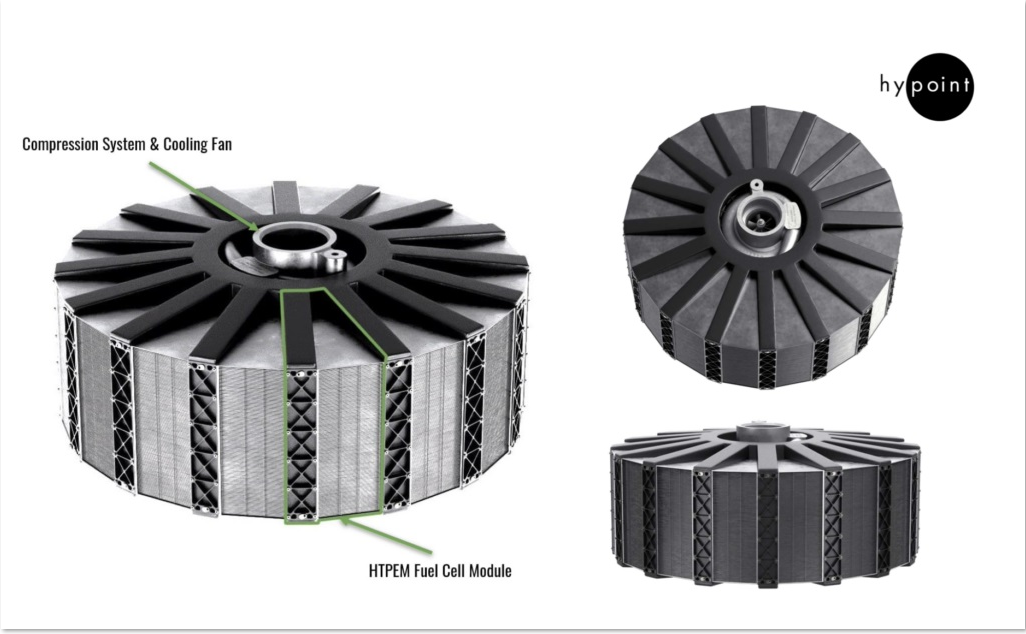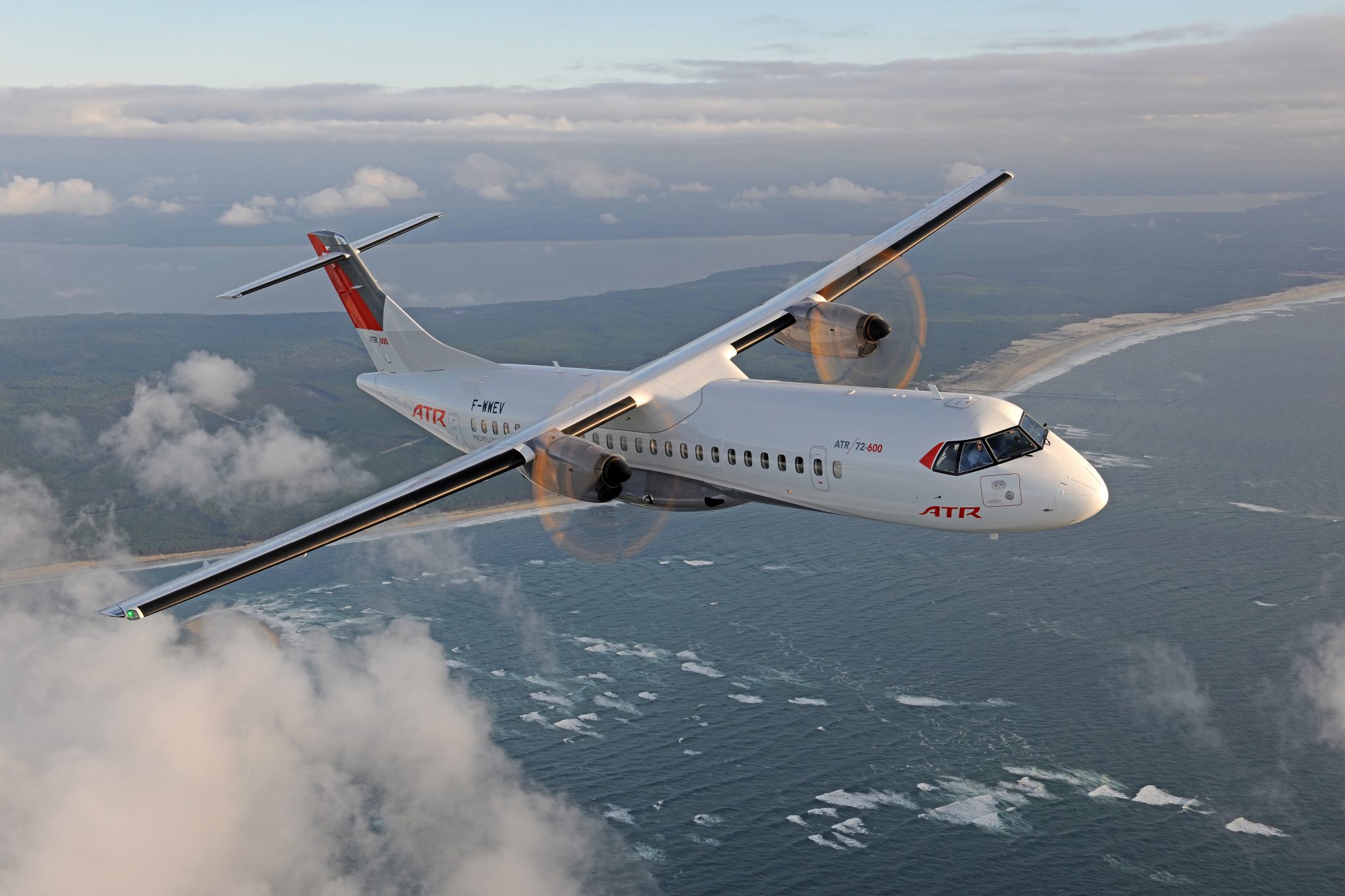Leeham News and Analysis
There's more to real news than a news release.
Bjorn’s Corner: Sustainable Air Transport. Part 24. High Temperature Fuel Cells
June 17, 2022, ©. Leeham News: Last week, we looked at the installation effects and efficiencies of the fuel cell systems we discussed in earlier parts of the series.
We could see the variants were significantly heavier than the propulsion system they would replace for an ATR72 size aircraft. The discussion assumed classical PEM fuel cells, also called Low Temperature PEM Fuel Cells. Now we look at if High Temperature PEM Fuel Cells can improve the installation situation.
High Temperature PEM Fuel Cells
High Temperature PEM Fuel Cells (called HTFC from now on) were developed over the last 30 years to overcome some problems with Low Temperature PEM Fuel Cells (LTFC from now on).
LTFCs have water as the electrolyte that conducts the protons in the fuel cell PEM and, therefore, cannot run at temperatures above 80°C as the water then evaporates from the PEM. The low temperature process also makes the LTFC sensitive to H2 purity, which must be over 99.9%. The higher operating temperature of typically 160°C and a phosphor acid PEM electrolyte makes the HTFC less sensitive to H2 impurities; it works with 97% pure H2.
The other advantage is the higher process temperature makes the cooling easier. The cooling of an LTFC is a real problem as the system must function in, say, the Middle East or African 40+°C climate, which means a ram-air heat exchanger has a 40°C delta for cooling. Surface cooling solutions must also handle a departing aircraft’s high-intensity sun radiation. With the HTFC at 160°C, the delta increases to 120°C, a 3X improvement.
The negative with HTFC is that these need heating to get to the working temperature of 160°C before the process runs. Therefore, we can expect to find an LTFC as an APU to supply the power to heat up and start the propulsion systems in an HTFC-based aircraft.
While the HTFC allows a simpler and lighter heat management system, it had a higher stack mass as its fuel cell process was less developed than the LTFC’s.
Hypoint
A California startup, Hypoint, has attacked the mass issue by developing lighter aluminum-based bi-polar stack plates and has decided to use air cooling for the balance of plant. Its design uses HTFC modules stacked in parallel and serial to get the desired power and voltage levels to feed the systems DC/DC converter, Figure 2.
The initial 20kW module will be ready this summer to combine into a system with the lead customer, Piasecki Aircraft, for an eVTOL application.
An example of how these modules can be combined into a 160kW system is shown in Figure 3.

Figure 2. A 160kW HTFC system with a compressor in the middle, providing cathode and cooling air. Source: Hypoint.
The system has a circular form to fit existing aircraft nacelles, but the modules can be stacked in any convenient format. They must be pressurized and cooled by a compressor, however (a radial compressor is housed in the center of the unit), so pressure air ducting to the modules is required.
If the oxygen-depleted exit and cooling air energy shall be recovered, the air must be ducted back to a combined turbine+compressor unit, where part of the heat energy from the modules can be recovered in the turbine to drive the system compressor.
The modules and their applications are in development. First-round modules are at 20kW, whereas next-generation modules shall triple the power level.
As the balance of plant requires fewer components (no air humidifier, no liquid-based thermal management system), Hypoint envisages a system power density of 2kW/kg, including the balance of plant components.
The Hypoint approach is new and therefore less mature than converting existing LTFC systems to airborne use. Still, it is more adapted to airborne applications with its improved cooling, a simpler balance of plant, and lower mass.
Once higher power modules are available, and there is more experience in configuring these into systems with the power levels of Megawatts, it’s an attractive alternative to standard PEM Fuel Cells.





Looks like a good start, one can expect it will be copied/swallowed by Honeywell/Raythorn Technologies or similar companies whose products it will replace once certified. Especailly Honeywell as the heat energy recovery fits Honeywell small radial compressors and turbines perfectly.
In order to cool something, you must heat something else.
If there are cryo coolers on board for an LH2/superconducting system, then those coolers produce heat that can be diverted to an array of HTFCs.
How do the heat quantities match up?
Something about this variant of the fuel cell technology was like a light bulb moment for me that previous versions didnt. I definitely will be looking further into the chemical engineering approach for the process and physical operation
Saul on the road to Damascus.
There is a level even above this; the SOFC “Solid Oxide Fuel Cell”. Whereas LTFC mobilise the ions in an aqueous solution, HTFC mobilise ions in phosphoric acid an SOFC will have ion mobility in metallic oxides. Due to the high operating temperature platinum catalysts are not required and direct operation on hydrocarbons will be possible. The high temperature of up to 1000C means about a 60% efficiency. With turbo compounding (turbine, compressor, motor generator) efficiency could get to 85%. Even 70% would be stunning. Some other new technology for heat recovery are now feasible such as super critical CO2 cycle.
Presumably the 20kW Hypoint HTFC module is being developed for a version of the Piasaki PA-890 EVTOL Slowed Rotor Winged Compound Helicopter. An interesting concept well tested with gas turbine propulsion it looks like being able to address conventional helicopter markets as well as eVTOL UAM markets. IE does not have the severe hover time restrictions of some eVTOL. With redundancy in the battery pack and duel motors for the main and tail rotor it might have a operating cost advantage.
Piasaki PA-890 “There are a lot of novel eVTOL configurations proposed out there that will require the development of a new FAA certification basis. This represents a significant risk. We are able to meet our design objectives with a compound helicopter that can be certified under existing Part 27 conventional helicopter standards. So, given the lower risk of the certification process and the simplicity of the design, in our minds, it reduces costs both in terms of acquisition and operations” by using a design that more closely parallels that of a conventional helicopter, albeit a compound one”
John Piasecki- the company CEO, said
“According to John, electric motors are very easily operated at different RPMs and hence Electric Propulsion makes it demonstrably easier to control main rotor speed and achieve noise reduction. He further added that the company rejected a battery-only electric design based on performance and a hybrid propulsion system based on cost, given the low associated energy density and limited life cycles.”
“Hybrid turned out to be excellent from a performance and cost point of view, but it still had a residual carbon footprint. Hydrogen fuel cells offered double the cost-saving and have zero carbon footprint”
“HyPoint, the company developing zero carbon-emission turbo air-cooled hydrogen fuel cell systems for aviation and urban air mobility, announced that it has entered into a multi-phase collaborative development agreement with Piasecki Aircraft Corporation (PiAC), a pioneer in advanced rotorcraft and unmanned aircraft systems (UAS) platforms and technologies, for the development and certification of a hydrogen fuel cell system for electric vertical takeoff and landing (eVTOL) vehicle applications.
The initial $6.5 million agreement will culminate in the development of five 650kW hydrogen fuel cell systems for use in Piasecki’s eVTOL PA-890 Compound Helicopter, which is expected to be the world’s first manned hydrogen-powered helicopter.”
HyPoint, August 29, 2021 – MENLO PARK, CA – HyPoint, the company developing zero carbon-emission turbo air-cooled hydrogen fuel cell systems for aviation and urban air mobility, announced that it has entered into a multi-phase collaborative development agreement with Piasecki Aircraft Corporation (PiAC), a pioneer in advanced rotorcraft and unmanned aircraft systems (UAS) platforms and technologies, for the development and certification of a hydrogen fuel cell system for electric vertical takeoff and landing (eVTOL) vehicle applications.
The initial $6.5 million agreement will culminate in the development of five 650kW hydrogen fuel cell systems for use in Piasecki’s eVTOL PA-890 Compound Helicopter, which is expected to be the world’s first manned hydrogen-powered helicopter.
Its great seeing your useful and positive contributions William.
Thanks, I’d like to see a giant fuel cell powered airliner silently land in Sydney or New Zealand somewhere. One of the things I find hopeful is a certain equalisation of energy around the world.